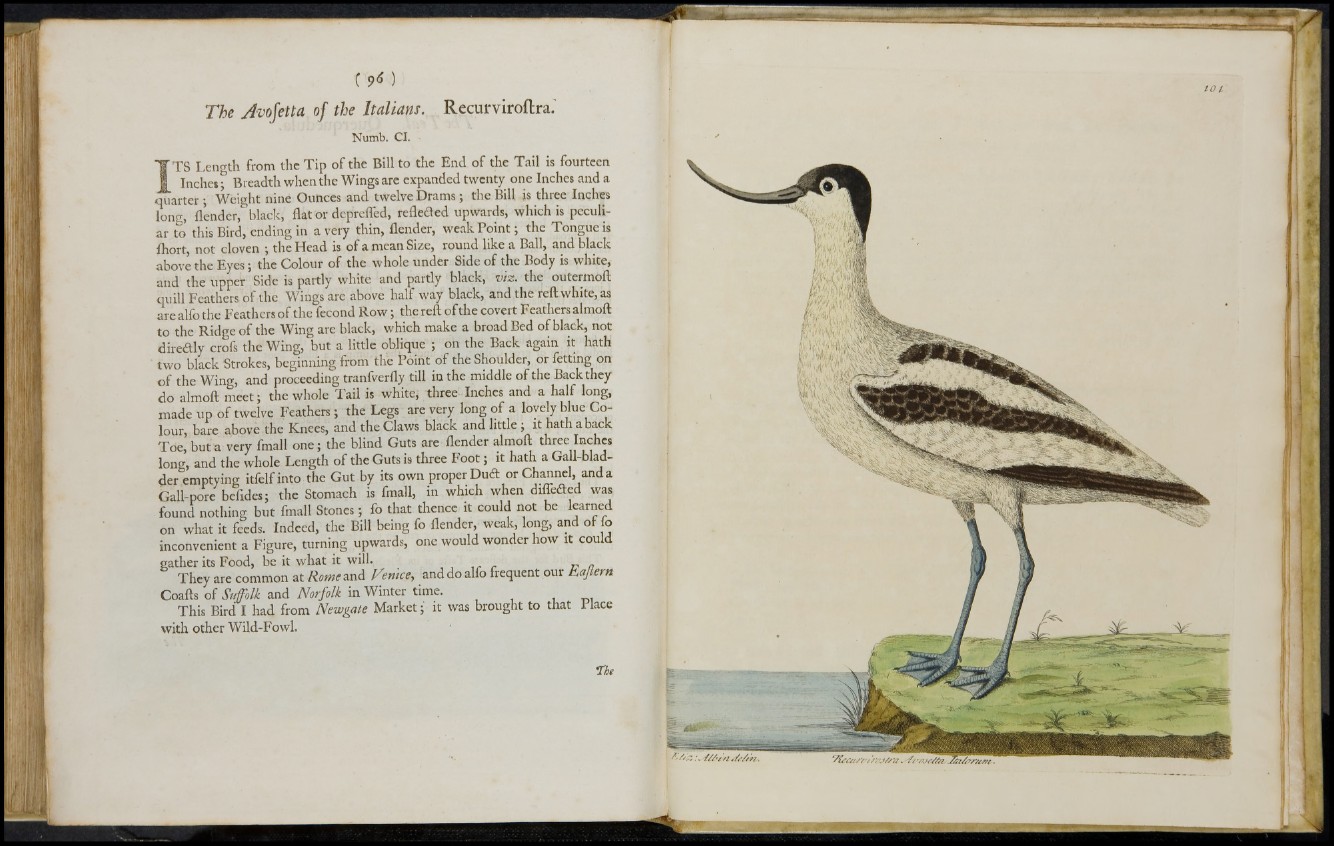
The Avofetta of the Italians. Recur viroftra.'
Numb. CL
ITS Length from the Tip of the Bill to the End of the Tail is fourteen
Inches; Breadth when the Wings are expanded twenty one Inches and a
quarter ; Weight nine Ounces and twelve Drams; the Bill is three Inches
long, ilender, black, flat or deprefled, refleded upwards, which is peculiar
to this Bird, ending in a very thin, ilender, weak Point; the Tongue is
ihort, not cloven ; the Head is of a mean Size, round like a Ball, and black
above the Eyes; the Colour of the whole under Side of the Body is white,
and the upper Side is partly white and partly black, viz. the outermoft
quill Feathers of the Wrings are above half way black, and the reft white, as
are alfo the Feathers of the fecond Row; the reft of the covert Feathers almoft
to the Ridge of the Wing are black, which make a broad Bed of black, not
diredly crofs the Wing, but a little oblique jj on the Back again it hath
two black Strokes, beginning from the Point of the Shoulder, or fetting on
of the Wing, and proceeding tranfverily till in the middle of the Back they
do almoft meet; the whole Tail is white, three Inches and a half long,
made up of twelve Feathers ; the Legs are very long of a lovely blue Colour,
bare above the Knees, and the Claws black and little ; it hath aback
Toe, but a very fmall one; the blind Guts are ilender almoft three Inches
long, and the whole Length of the Guts is three Foot; it hath a Gall-bladder
emptying itfelf into the Gut by its own proper Du£t or Channel, and a
Gall-pore befides; the Stomach is fmall, in which when diffetted was
found nothing but fmall Stones; fo that thence it could not be learned
on what it feeds. Indeed, the Bill being fo ilender, weak, long, and oi o
inconvenient a Figure, turning upwards, one would wonder how it could
gather its Food, be it what it will.
They are common at Rome and V'¡nice, and do alfo frequent our bajtern
Coafts of Suffolk and Norfolk in Winter time.
This Bird I had from Newgate Market; it was brought to that Place
with other Wild-Fowl.
th e
t o t